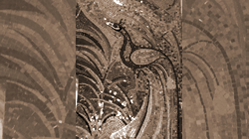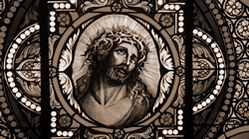
|
Witraż w kościele pw. św. Stanisława Bp. w Subkowach.
|
Witraż "Jan Paweł II".
|
Witraż " Jezu Ufam Tobie" w kościele pw. Świętej Trójcy, Wejherowo.
|
|
Witraż w kościele pw. Chrystusa Jedynego Zbawiciela, Swarzędz. Wykonany w całości ze szkła Streaky-Glas z huty Lamberts.
|
Witraż w elewacji kościoła pw. Chrystusa Jedynego Zbawiciela.
|
Witraż "Chrzest Chrystusa", kościół pw. Św. Jana Chrzciciela w Sierakowicach.
|
|
Witraż pt . "Świeci Zakonu Trynitarzy", Kraków kościół seminaryjny Zakonu Trymnitarzy.
|
Witraż "Chrzest Chrystusa", kościół p.w. Św. Józefa w Świeciu nad Wisłą.
|
Witraż "Michał Archanioł", kościół p.w. Św Jana Jerozolimskiego za Murami w Poznaniu.
|
|
Witraż "Błogosławiony Jan Paweł II", Poznań.
|
Witraż z cyklu "Stworzenie świata" w kościle p.w. Chrystusa Króla Wszechświata w Borowie koło Gdańska.
|
Witraż "Błogosławiony Jan Paweł II" Chełmce.
|
|
Witraż z cyklu "Stworzenie świata" w kościle p.w. Chrystusa Króla Wszechświata w Borowie koło Gdańska.
|
Mozaika i witraże w kaplicy kościoła p.w. Serca Jezusowego w Starogardzie.
|
Witraż w kościele p.w. Św. Łukasza w Poznaniu.
|
|
Kopia witraża autorstwa Mistrza Gerlachusa zrealizowana w kościele p.w. Trójcy Świętej w Nowym Mieście nad Wartą.
|
Witraż z cyklu "Męczennicy" - kopia witrażu autorstwa Józefa Mehoffera z katedry we Fryburgu. Poznań. /detal/
|
Witraż z cyklu "Męczennicy" - kopia witrażu autorstwa Józefa Mehoffera z katedry we Fryburgu. Poznań.
|
|
Witraż "Trójca Święta" - kościół p.w. św. Jadwigi w Lusowie.
|
Witraż "Kazanie na Górze". Kościół p.w. Chrystusa Najwyższego Kapłana. Gniezno.
|
Witraż "Tajemnice różańcowe". kościół pw. Św.Trójcy w Nowym Mieście nad Wartą.
|
|
Witraż "Tajemnice różańcowe", kościół pw. Św.Trójcy w Nowym Mieście nad Wartą.
|
Witraż. Kościół p.w. Nawrócenia św. Pawła w Poznaniu /detal/.
|
Witraż. Kościół p.w. Nawrócenia św. Pawła w Poznaniu.
|
Welcome to the website of the Independent Stained Glass and Mosaic Studio of Magdalena and Marcin Czeski.
Mosaic
Mosaic is the main interest of Magdalena Czeska, a graduate of the Faculty of Painting, Graphic Art and Sculpture at the University of Arts in Poznań. The artist creates monumental mosaics and numerous mosaic structures.
Mosaic Poznań
The mosaics designed in Magdalena Czeska's studio are created with the use of traditional methods and materials, such as ceramics, glass and stone. The studio specializes in creating monumental mosaic works as well as decorative mosaics for individual customers.
Preservation
Heritage Preservation. For years Magdalena and Marcin Czeski have been preserving, restoring and reconstructing historic stained glass and mosaics. We develop preservation plans and prepare documentation. We implement the preservation principles promoted by CVMA.
Stained Glass Poznań
Marcin Czeski specializes in the art of stained glass. The artist creates monumental religious stained-glass works as well as office stained glass. His works are featured in numerous art exhibitions.
Stained Glass
The stained glass created in the Studio of Magdalena and Marcin Czeski is comprehensively manufactured - from design, through manufacture, to assembly at the destination site. We make stained glass using all known techniques, including the lead technique, Tiffany technique, fusing, etching, sandblasting, grinding, and last but not least – patination.



































